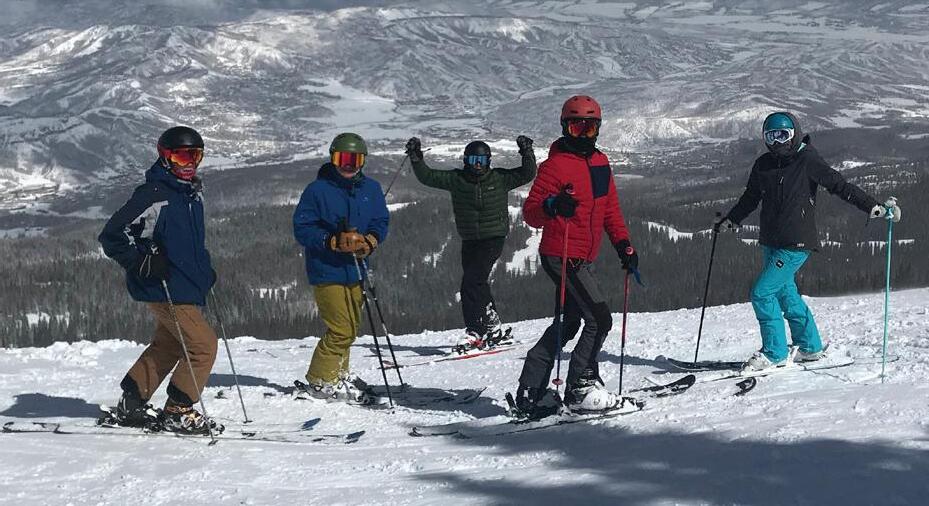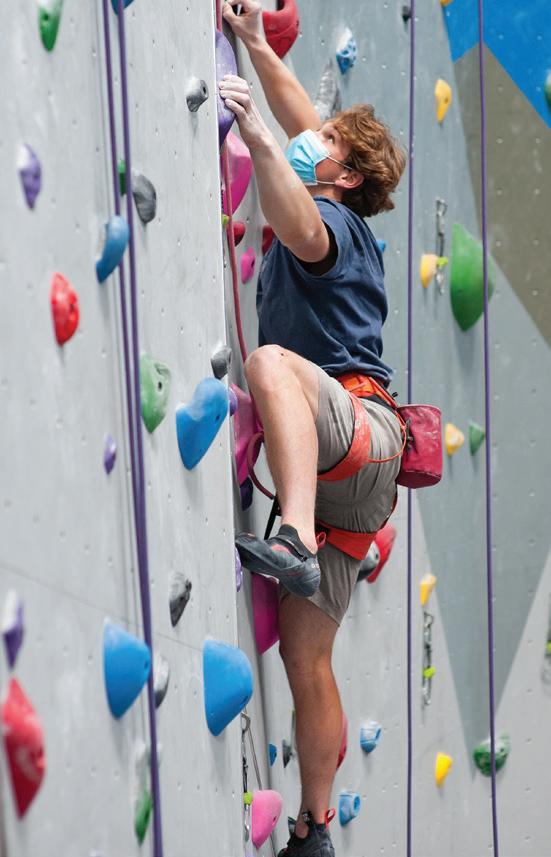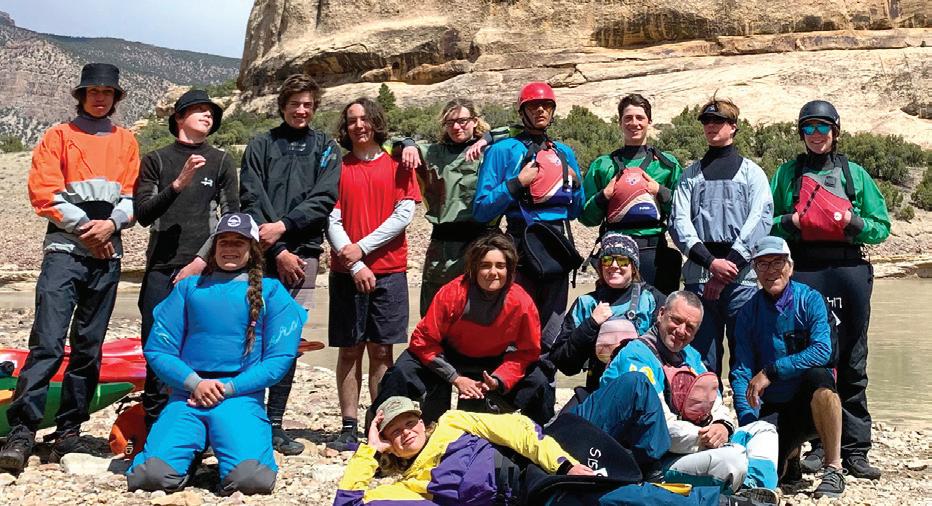
4 minute read
ALTHOUGH FAR FROM NORMAL, SPRING 2021 WAS FULL OF HIGHLIGHTS
- BY HEATH HIGNIGHT
In a typical school year, students are away from campus for about three weeks for winter break. However, this year, students left campus just before Thanksgiving and didn’t return in person until January 18th, nearly seven weeks later. Although that time away included remote academic classes and exams-and a precautionary quarantine before returning--the winter break challenged both faculty and students with an out-of-the-ordinary rhythm.
Much of the Spring 2021 semester was peppered with such adjustments. Recognizing the risk of exposure that would come with students traveling home for a 2-week spring break, CRMS opted instead to insert within the second semester calendar four “short” weeks where students attended classes Monday through Thursday morning. This adjustment may not have made up for a twoweek spring vacation, but it provided students with ample opportunities to enjoy extra time skiing, studying, participating in art and music experiences with their friends, or just playing games and relaxing.
One of the more substantial changes involved the winter sports program. In a typical year, the spring semester would include two half-days on the mountain, with students departing campus right after lunch on Tuesdays and Thursdays for Snowmass or Aspen Highlands. This schedule has long had drawbacks. Mountain conditions change throughout the morning, resulting in students arriving after many skiers have hit the snow, which often makes for less-than-ideal skiing conditions. Departing after lunch sometimes meant having two or fewer hours on the mountain depending on conditions and lift closure times. Environmentally speaking, the old schedule required more transportation resources, adding miles to the bus fleet and requiring thousands of gallons of fuel. Moving to a full-day ski day idea was often discussed in the past for a whole variety of non-pandemic reasons, but the pandemic provided the impetus to finally do it.
“All of the sudden, we were faced with the need to limit time in busses, and so we took advantage of it to test this idea out,” said Diane Hackl, Director of the Active Program. “The happy result coming out of this was a realization that less bus time was beneficial. More time on a mountain on a given day, taking more advantage of the conditions throughout the day. It was also a way for the students to punctuate the week, creating the mental space to dig into skiing in a healthy way. It slowed down the pace for them, too, creating a breather in the middle of the week.”
“We also saw attendance improve dramatically; in a normal year, we could have two dozen students absent on a given ski day, but this year the kids were psyched and could rally for the whole day format.”
The full-day ski day will carry forward into the 2021-22 school year, she said. “We’re going to hang on to this because of what we learned. Everyone who came out of this was happily surprised by how much students and faculty enjoyed that shift.”
This shift presents challenges for the Alpine team, she admitted, but the plan is to set an additional afternoon on snow with gate training every week for the team members--released at lunch like the old schedule.
It was more complicated to accommodate team sports due to major changes in both schedule and format. The alpine team couldn’t compete. The mountain bike team participated in virtual meets for distance and time that would see them still compete at the school level by sharing results from local competitions. The climb team completed a condensed season by having only one team in a gym at a time, comparing results after all teams visited the hosting gym. Soccer teams played in a traditional yet condensed format that moved the boys’ season to the early spring and the girls’ season to the second half of the spring. This stipulation enabled the girls’ team, which started later to finish a minimum number of games before this year’s early graduation on May 22nd. Schools finishing their year later played matches into June, and we’ll learn the standings later (around the time you’re reading this newsletter).

Trips became even more important because of the limited interaction among dorm residents and limits on day student time on campus. Although trips required more modest adjustments like COVID-19 testing on the way out and back from trips, the significance and impact of Spring Trip became outsized in facilitating relationship-building among students.
After a long winter under COVID-19 restrictions, Spring Trip came at just the right moment. Faculty members Katie Hyman and Peter Benedict, together with four parent volunteers, took a group of 14 students to Dinosaur National Park to kayak the Yampa River to its confluence with the Green River.

“Leaving the vehicles and cell phones at the put-in, the students instantaneously adjusted to the rhythm of river travel,” said Katie. “The trip called for a blend of reverence and simple, joyful play. Every bend in the river gifted another view of gargantuan sandstone cliffs, and every eddy line and wave prompted squirts and surfs from the students. Considering that the last year has meant greater isolation and precaution for so many of us, Spring Trip was both a literal and figurative breath of fresh air. Day students and boarders melded into one group. First-year students joined cook crews with juniors and seniors. Like any CRMS trip, laughter came from all corners of camp. This particular week on the water served as a stirring reminder of the power of outdoor living and travel, the denizens of health, and the importance of community.”
Not even Scholarship Work Day, in its 56th year, escaped substantive change.
This year, SWD included some large projects benefiting the local community. More than 20 students participated in beautifying the ARTway non-motorized path along the old Rio Grande rail line through town. In partnership with
Carbondale Arts and Roaring Fork Transportation Authority volunteers, CRMS students and parents cleared weeds, laid new mulch, planted wildflowers, and painted rocks at community park areas along the path. An even larger group of students, parents, and faculty joined Roaring Fork Mountain Bike Association and Roaring Fork Outdoor Volunteers to repair and build trails on Red Hill, and repair the North Face Bike Park by Roaring Fork High School. These larger projects helped maintain a safe working environment outdoors for students, reducing their exposure while having a very visible impact on the community that will be enjoyed by many this summer and next fall.
As the academic year drew to a close, CRMS was the only boarding school in Colorado not to experience a disruptive COVID outbreak within its community. This was thanks, in large part, to CRMS students, families, and faculty drawing on their resilience to adapt and overcome the challenges of a (hopefully) once-ina-lifetime pandemic.







